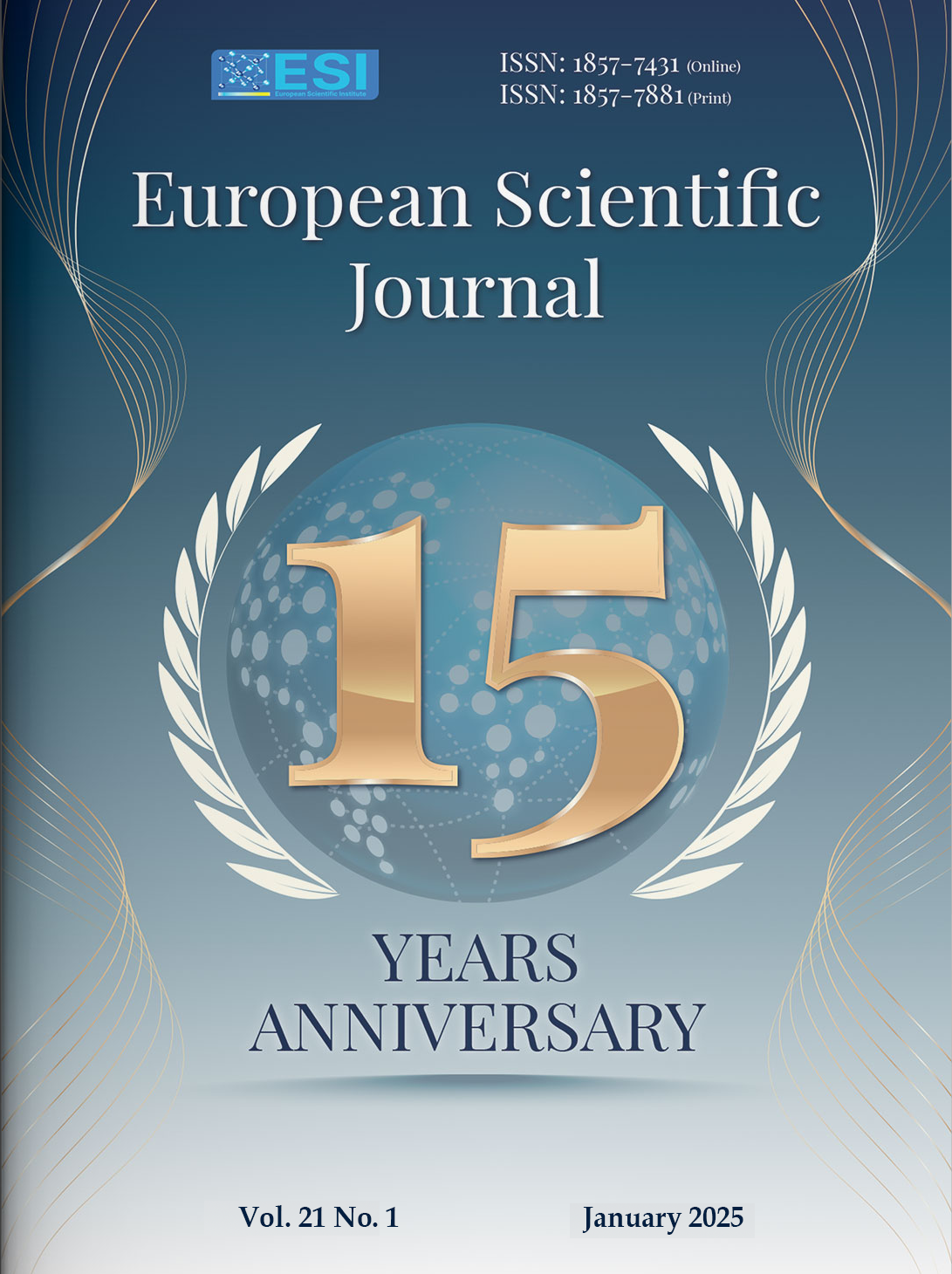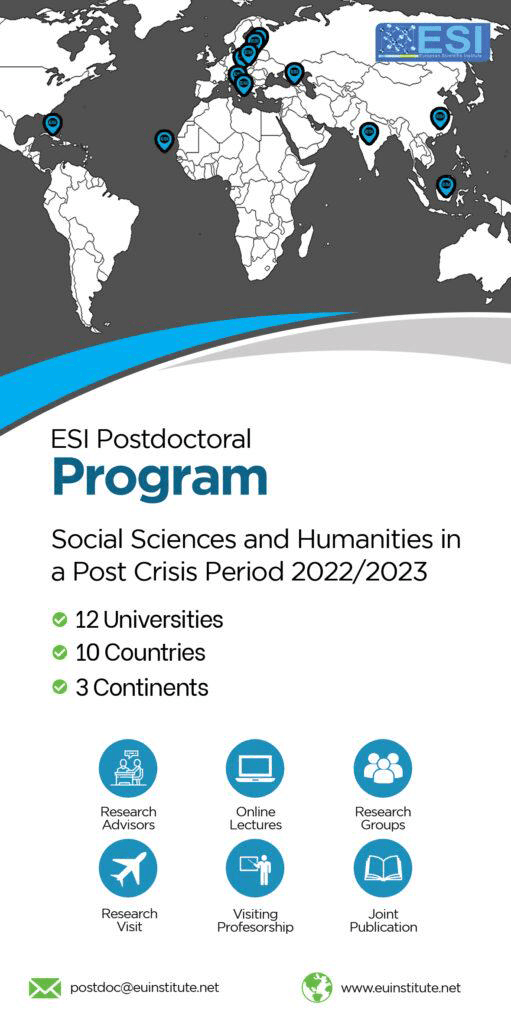Évaluation des filières énergétiques marocaines : Impacts environnementaux et implications pour une transition vers une économie verte
Abstract
L’objet de notre article est de déterminer la relation qui existe entre le modèle de développement basé sur l’option de l’économie verte, son défi énergétique ainsi que ses impacts environnementaux attribuables aux diverses filières énergétiques marocaines. En utilisant la méthodologie des scénarios et les données collectées auprès des organismes nationaux et internationaux, nous avons comparé les impacts environnementaux de ces filières sur l’ensemble de l’économie marocaine en les classant les unes par rapport aux autres, en mettant l'accent sur des critères tels que les émissions de CO2 et de CH4, la modification de l'écosystème, le changement de paysage et les risques pour la santé et la sécurité. Ensuite, et sur la base de ce classement, nous avons déterminé les répercussions environnementales de ces filières sur la transition énergétique du modèle de développement basé sur l’option de l’économie verte. Nos résultats montrent qu’en plus de présenter le moins d’impacts environnementaux, les filières hydraulique, solaire et éolienne sont plus durables et produisent un flux d’énergie continue et pratiquement inépuisable. Ils suggèrent qu'un mix énergétique équilibré, intégrant ces trois ressources, est essentiel pour maximiser les avantages socio-économiques et environnementaux.
The purpose of our paper is to determine the relationship between the development model based on the green economy option, its energy challenge, and the environmental impacts attributable to the different Moroccan energy branches. Using the scenario methodology and data collected from national and international organizations, we compared the environmental impacts of these sectors on the Moroccan economy as a whole by ranking them against each other, focusing on criteria such as CO2 and CH4 emissions, ecosystem modification, landscape change, and health and safety risks. Based on this ranking, we then determined the environmental impact of these sectors on the energy transition of the development model based on the green economy option. Our results show that hydro, solar, and wind power not only have the lowest environmental impact but are also more sustainable and produce a continuous and virtually inexhaustible flow of energy. The results suggest that a balanced energy mix integrating these three resources is essential to maximise socio-economic and environmental benefits.
Downloads
Metrics
PlumX Statistics
References
2. Achbah, M., Khattabi, A., Pruneau, D., & Boumeaza, T. (2024). Évaluation de la vulnérabilité des communautés de montagne face au changement climatique. Région Beni-Mellal-Khénifra, Maroc. VertigO-la revue électronique en sciences de l'environnement, 24(2).
3. ADEME (2012). Contribution de l’ADEME à l’élaboration de visions énergétiques 2030 – 2050. Ministère de l’Ecologie, du Développement Durable et de l’Energie, Paris.
4. Akinsooto, O., Ogundipe, O. B., & Ikemba, S. (2024). Regulatory policies for enhancing grid stability through the integration of renewable energy and battery energy storage systems (BESS).
5. Anderson, D. (1999). Environnement Canada.
6. Banque Mondiale (2013). Analyse d’impacts socioéconomiques de la politique de croissance verte au Maroc – volet énergie : Une évaluation en équilibre général. Département du développement durable (MNSSD) Région Moyen-Orient et Afrique du Nord (Rapport sur Le Maroc N° 87558). https://documents1.worldbank.org/curated/en/237751468279864840/pdf/875580WP0P11370ssance0Verte0Energie.pdf
7. Boulakhbar, M., Lebrouhi, B., Kousksou, T., Smouh, S., Jamil, A., Maaroufi, M., & Zazi, M. (2020). Towards a large-scale integration of renewable energies in Morocco. Journal of Energy Storage, 32, 101806.
8. Botelho, A., Ferreira, P., Lima, F., Pinto, L. M. C., & Sousa, S. (2017). Assessment of the environmental impacts associated with hydropower. Renewable and Sustainable Energy Reviews, 70, 896-904.
9. Boulanger, P. M. et al. (2015). Etude de Prospective : Transition Energétique Rapport Final. Institut Wallon de l’évaluation, de la prospective et de la statistique. https://www.iweps.be/wp-content/uploads/2017/01/2014_-_transition_energetique_-_rapport_final_0.pdf
10. Dalal-Clayton, D. B., & Sadler, B. (1999). Strategic environmental assessment: a rapidly evolving approach. London: International Institute for Environment and Development.
11. Energy Information Administration (EIA). (2024).Coal and the environment. U.S. Department of Energy. https://www.eia.gov/energyexplained/coal/coal-and-the-environment.php
12. Environmental Protection Agency (EPA). (2024). Inventory of U.S. Greenhouse Gas Emissions and Sinks: 1990-2022. U.S. Environmental Protection Agency, EPA 430-R-24-004.
13. Farhani, S., & Bacha, F. (2021). High efficiency power electronic converter for fuel cell system application. Ain Shams Engineering Journal, 12(3), 2655-2664.
14. Friedlingstein, P., O'Sullivan, M., Jones, M. W., Andrew, R. M., Hauck, J., Landschützer, P., ... & Zeng, J. (2024). Global Carbon Budget 2024. Earth System Science Data Discussions, 2024, 1-133.
15. García, I., & Leidreiter, A. (2016). A roadmap for 100% renewable energy in Morocco. Hamburg: World Future Council.
16. Ghazi, F. E., Sedra, M. B., & Akdi, M. (2021). Electricity development and opportunities to reduce carbon dioxide emissions in Morocco. International Journal of Energy Economics and Policy, 11(4), 149-156.
17. Hao, L. N., Umar, M., Khan, Z., & Ali, W. (2021). Green growth and low carbon emission in G7 countries: how critical the network of environmental taxes, renewable energy and human capital is?. Science of the Total Environment, 752, 141853.
18. HCP (2011). Prospective Maroc 2030: prospective énergétique du Maroc, enjeux et défis, HCP, Royaume du Maroc.
19. Hrovatin, N., Cagno, E., Dolšak, J., & Zorić, J. (2021). How important are perceived barriers and drivers versus other contextual factors for the adoption of energy efficiency measures: An empirical investigation in manufacturing SMEs. Journal of Cleaner Production, 323, 129123.
20. Huber, S. T., & Steininger, K. W. (2022). Critical sustainability issues in the production of wind and solar electricity generation as well as storage facilities and possible solutions. Journal of Cleaner Production, 339, 130720.
21. International Energy Agency (IEA). (2014). World Energy Outlook 2014. IEA, Paris.
22. International Energy Agency (IEA). (2019). Energy Policies beyond IEA Countries: Morocco 2019. IEA, Paris.
23. International Energy Agency (IEA). (2023). Emission factors 2023. IEA, Paris.
24. International Energy Agency (IEA). (2023). Global methane tracker documentation 2023 version. IEA, Paris.
25. International Energy Agency (IEA). (2024). Emission factors 2024, IEA, Paris.
26. International Energy Agency (IEA). (2024). Global methane tracker documentation 2024 version. IEA, Paris.
27. Kousksou, T., Allouhi, A., Belattar, M., Jamil, A., El Rhafiki, T., Arid, A., & Zeraouli, Y. (2015). Renewable energy potential and national policy directions for sustainable development in Morocco. Renewable and Sustainable Energy Reviews, 47, 46-57.
28. Leduc G. (1992). Glossaire de la terminologie relative à la maîtrise de l’énergie, BBE. Ministère de l’Energie et des Ressources du Québec, Montréal.
29. Leopold, L. B. (1971). A procedure for evaluating environmental impact, Vol. 645. US Department of the Interior.
30. Levi, M. D. (1991). Bretton woods: Blueprint for a greenhouse gas agreement. Ecological Economics, 4(3), 253-267.
31. Liu, H., Khan, I., Zakari, A., & Alharthi, M. (2022). Roles of trilemma in the world energy sector and transition towards sustainable energy: A study of economic growth and the environment. Energy Policy, 170, 113238.
32. Mikhno, I., Koval, V., Shvets, G., Garmatiuk, O., & Tamošiūnienė, R. (2021). Green economy in sustainable development and improvement of resource efficiency.
33. Ministère De La Transition Energétique et du Développement Durable (2019). Note De Conjoncture Énergétique Decembre 2019. MEM, Rabat.
34. Ministère De La Transition Energétique et du Développement Durable (2023). Note De Conjoncture Énergétique Février 2023. MEM, Rabat.
35. Mohsin, M., Taghizadeh-Hesary, F., Iqbal, N., & Saydaliev, H. B. (2022). The role of technological progress and renewable energy deployment in green economic growth. Renewable Energy, 190, 777-787.
36. Munawer, M. E. (2018). Human health and environmental impacts of coal combustion and post-combustion wastes. Journal of Sustainable Mining, 17(2), 87-96.
37. Munich Reinsurance Company, (1990). Energy Systems Today and Tomorrow. Munich Reinsurance Company, Federal Republic of Germany.
38. Murshed, M., Apergis, N., Alam, M. S., Khan, U., & Mahmud, S. (2022). The impacts of renewable energy, financial inclusivity, globalization, economic growth, and urbanization on carbon productivity: Evidence from net moderation and mediation effects of energy efficiency gains. Renewable Energy, 196, 824-838.
39. Nurdiawati, A., & Urban, F. (2021). Towards deep decarbonisation of energy-intensive industries: A review of current status, technologies and policies. Energies, 14(9), 2408.
40. Nafil, A., & Bouzi, M. (2020). The impact of the massive integration of renewable energies-Case of Morocco. Int. J. Eng. Res. Technol., 13(8), 2081-2089.
41. Pan, S. Y., Snyder, S. W., Packman, A. I., Lin, Y. J., & Chiang, P. C. (2018). Cooling water use in thermoelectric power generation and its associated challenges for addressing water-energy nexus. Water-Energy Nexus, 1(1), 26-41.
42. Physics World. (2022). Solar panels can heat the local urban environment, systematic review reveals. Retrieved December 10, 2024, from https://physicsworld.com/a/solar-panels-can-heat-the-local-urban-environment-systematic-review-reveals/
43. Pour, M. N., Chau, H. W., & Jamei, E. (2023). Sustainable Solutions: Examining the Influence of Energy Subsidy Strategies on Urban Heat Islands in the Persian Gulf Region.
44. Raymond, M. et al. (1994). Les impacts environnementaux des filières énergétiques au Québec, L’Institut des sciences de l’environnement, Université du Québec.
45. RTE (2020). Futurs énergétiques 2050 : Bilan de la Phase I, Réseau de Transport de l’Electricité, Paris.
46. Saidi, H. (2022). Les énergies renouvelables au Maroc à l’ère du nouveau modèle de développement. African Journal of Business and Finance, 1(1), 155-171.
47. Seddighi, S., Anthony, E. J., Seddighi, H., & Johnsson, F. (2023). The interplay between energy technologies and human health: Implications for energy transition. Energy Reports, 9, 5592-5611.
48. Shah, N. W., Baillie, B. R., Bishop, K., Ferraz, S., Högbom, L., & Nettles, J. (2022). The effects of forest management on water quality. Forest Ecology and Management, 522, 120397.
49. Simos, J. (1990). Evaluer l'impact sur l’environnement : Une approche originale par l'analyse multicritère et la négociation, Lausanne : Presses polytechniques et universitaires romandes, Vol. 1015.
50. UNEP (2011). Towards a Green Economy: Pathways to Sustainable Development and Poverty Eradication - A Synthesis for Policy Makers, UNEP.
51. Wathern, P., Young, S. N., Brown, I. W., et Roberts, D. A. (1988). Recent upland land use change and agricultural policy in Clwyd, North Wales. Applied Geography, 8(2), 147-163.
52. Whitney, J. B. R., & Maclaren, V. W. (1985). A Framework for the Assessment of EIA Methodologies. Environmental impact assessment: the Canadian experience, 1-32.
53. Yuyang, L. (2024). Natural resource efficiency and the road to a green economy: From scarcity to availability. Resources Policy, 89, 104574.
Copyright (c) 2025 Meryam Bouayad, Lahcen Elyoussoufi, Hamdaoui Mohamed

This work is licensed under a Creative Commons Attribution 4.0 International License.








